Best lightweight wheels: Lower weight for faster climbing
The best lightweight wheels can transform the way your bike rides and feels
The best lightweight wheels will help you to climb more easily, as well as provide faster acceleration and generally make your bike feel more exciting to ride.
Traditionally, lightweight wheels have often featured very shallow rim profiles, but things have shifted somewhat over the last few years.
Now, the use of hookless rims and the more widespread use of carbon fibre spokes means wheel weights are generally coming down, and rim depths can stay deeper and more aero. Making the best lightweight bikes faster overall.
Many of the all-rounder best road bike wheels we've shortlisted have deeper rim depths and provide greater aero benefits overall.
If you're shopping for lightweight wheels to bring the overall weight of your bike down, here's our expert pick of some of the very best on the market
Head to the bottom of the page for a ton of great extra buying advice and FAQ's.
Quick list
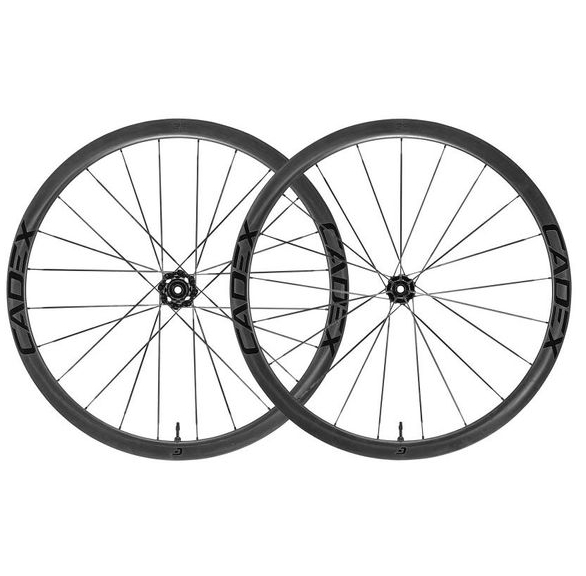
The Cadex 36 Disc wheelset boasts all the latest tech, including hookless beads and carbon spokes for a wheelset weight of 1,302g. Cadex even has its own tyres designed with wheels for aero gains and improved tubeless fit.
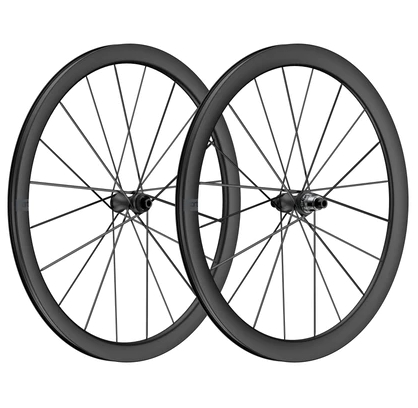
The Partington MKII R Series wheels are some of the lightest, stiffest disc clinchers around. Handmade, they feature carbon hub shells, spokes and rims. They even roll on CeramicSpeed bearings as standard.
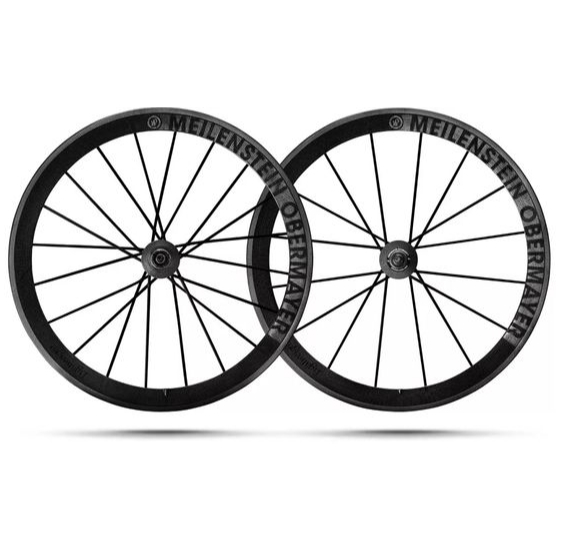
Lightweight has held a reputation as a manufacturer of some of the lightest wheels on the planet for decades. These wheels have a bonded all-carbon construction and are incredibly stiff.
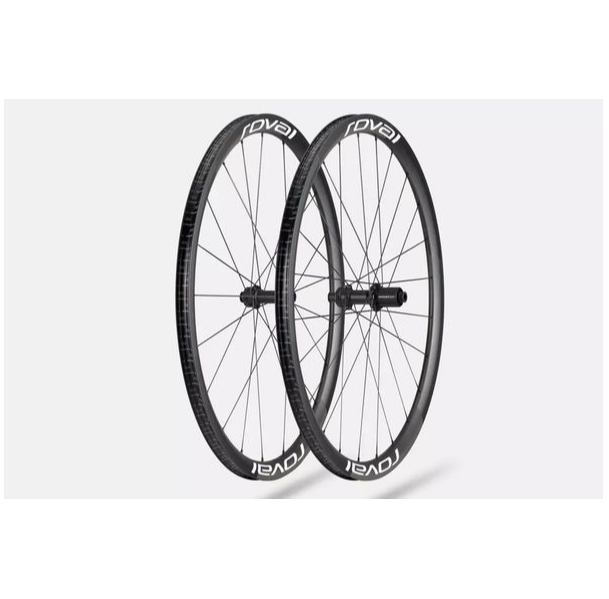
At 1,250g, the updated Roval Alpinist wheels are among the lightest available, and this second version is now tubeless-ready. Despite their lack of weight, they're stiff and they hold speed well on the flat too.
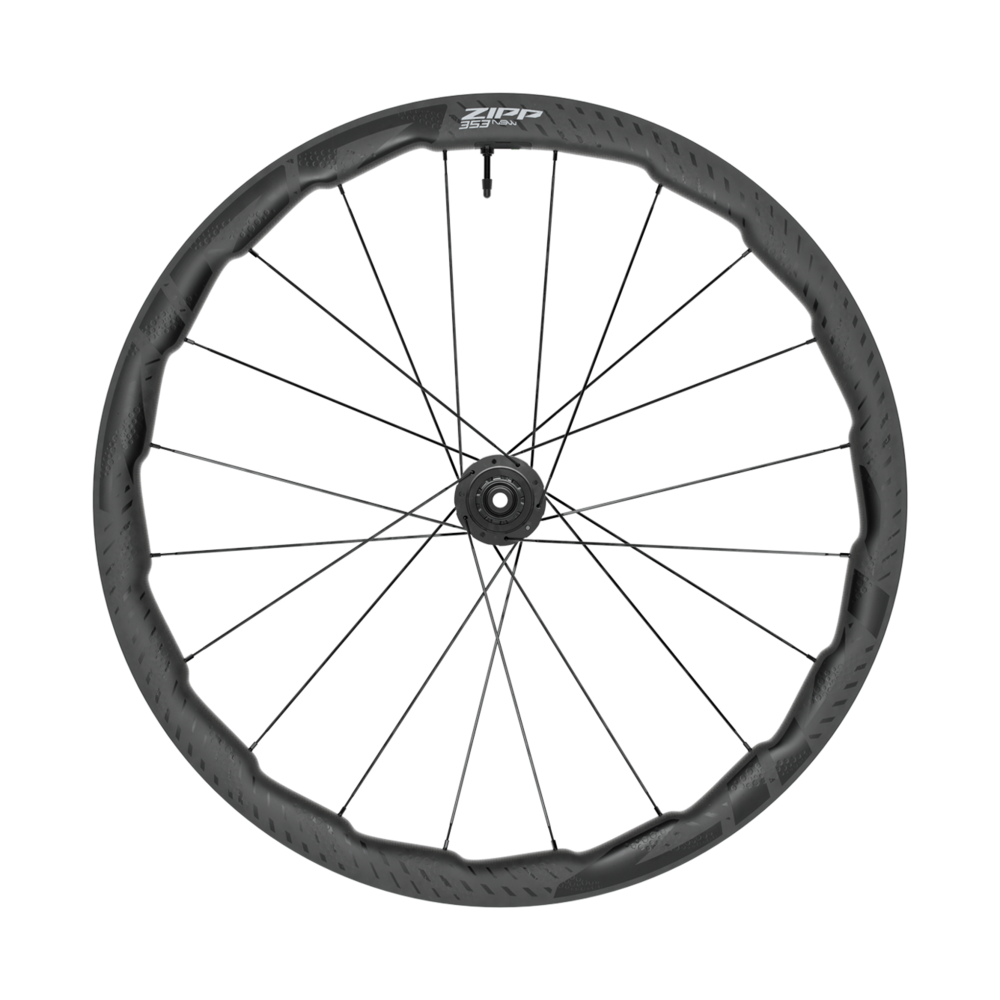
The 353 NSW wheels weigh 1,310 and have Zipp's sawtooth rim profile that varies between 35 and 40mm depth. These wheels got updated this year and now have an electronic real-time tyre pressure monitor built in.
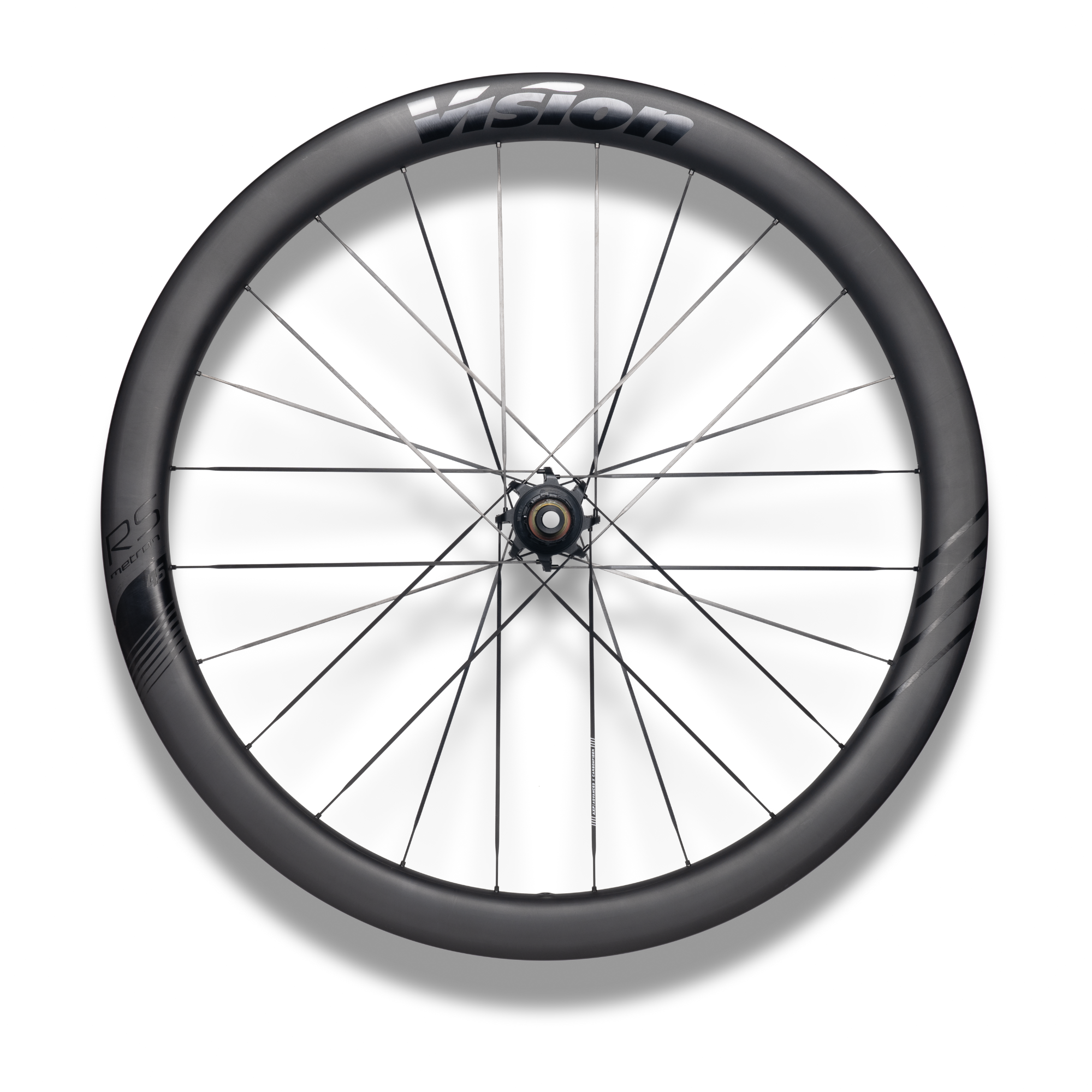
The Vision Metron 45 RS wheels are lightweight clinchers that got a revamp for this year, with plenty of pro riders using them. Despite their 45mm depth and wide aero profile, they weigh in at a very impressive 1290 grams.
Last updated: 2nd July 2025 We removed two entries we didn't feel were as up to date anymore, an older pair of Vision wheels and a pair of Mavic wheels. We updated the guides buying advice and added some wheels that were released earlier this year including the new Zipp 353 NSW and Vision Metron RS. We also added a value option in the HUNT 32 Aerodynamicist wheelset.
Best lightweight wheels
You can trust Cyclingnews
The best tubeless setup
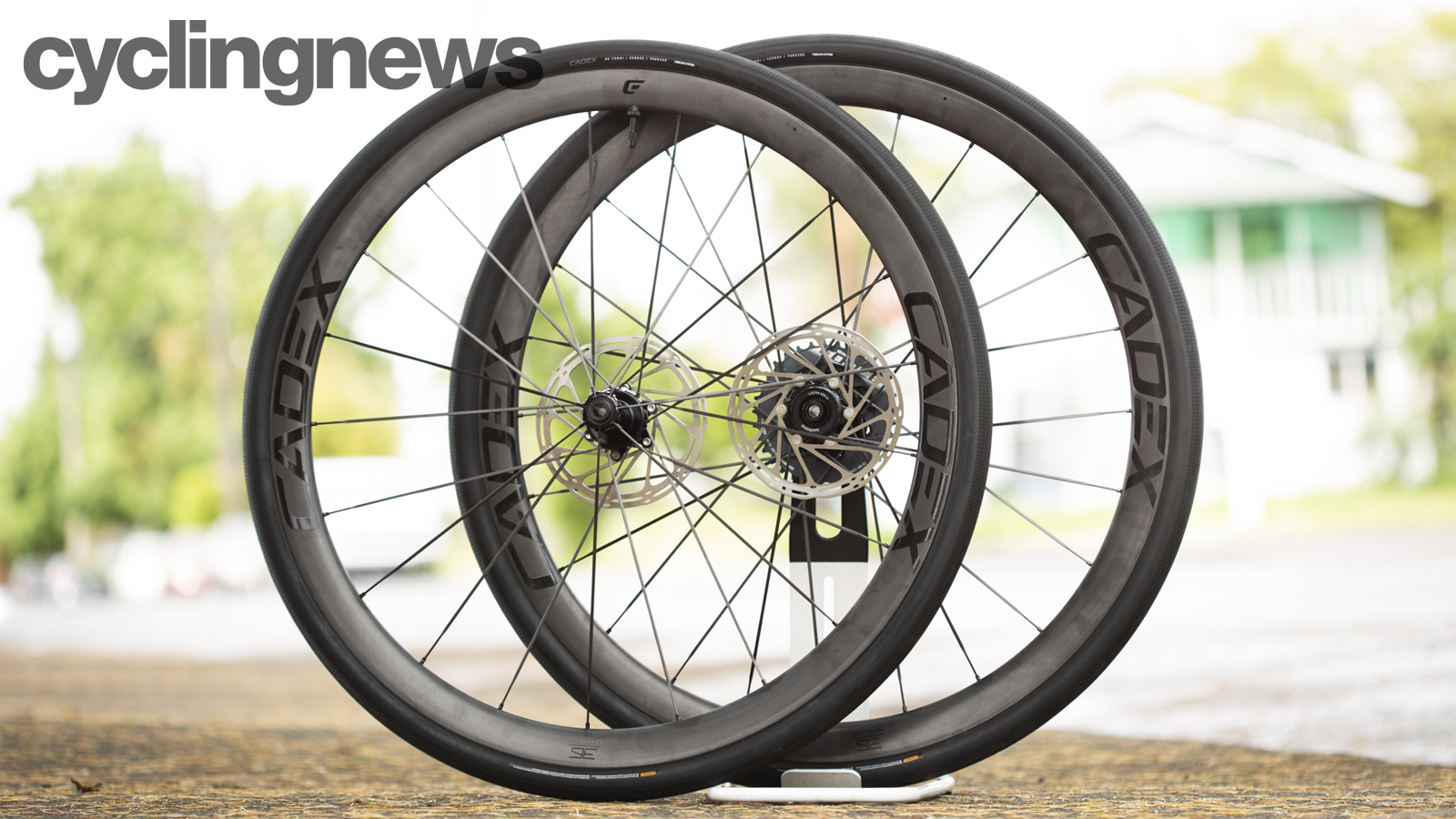
Specifications
Reasons to buy
Reasons to avoid
✅ You want an excellent tubeless experience: We found these wheels were very easy to set up tubeless, which is always confidence boosting
✅ You want some premium all-rounders from a big brand: Cadex are establishing themselves as a premium brand in their own right and are a premium product.
❌ You don't want to have to consult a tyre compatibility chart: Officially, Cadex does have a list of compatable tyres for these wheels due to the hookless rims.
❌ You prefer not to use hookless wheels: Some riders prefer a hooked wheel rim; if this is you, you might want to look elsewhere.
The latest set of wheels from Cadex didn't set out chasing a reduction in weight. Instead, it was designed to be an all-day wheelset that balances weight, aerodynamics, stiffness and comfort. Being designed with a depth of 36mm, hookless bead and carbon fibre spokes, a positive side effect is that they come in as some of the lightest wheels available today.
Weighing in at 1,302g, they are beatable on the scales (and for less money) but the performance they offer extends beyond a reduction in weight. The carbon fibre spokes offer extreme stiffness without being harsh, the ceramic bearings offer increased durability and efficiency, and the wide internal width maximises stability and cornering confidence.
But most impressive is Cadex's continued ability to make tubeless wheel systems that just work. In all our testing with all three of Cadex's tubeless wheels, the tubeless tyres have been a breeze to fit, and have retained air perfectly - no snapped tyre levers, and no leaks whatsoever.
All in all, while the price is high, the Cadex 36 is a wheelset that works in all scenarios, so is a great choice for those looking to own a single wheelset that will perform brilliantly no matter what your ride entails.
If you're looking for a deeper section wheel, don't discount the Cadex 50 Ultra Disc, which we weighed at 1,316g including tape and valves when we tested them.
For all the reasons we love them, take a look at our Cadex 36 Disc wheelset review.
Handmade top tier option
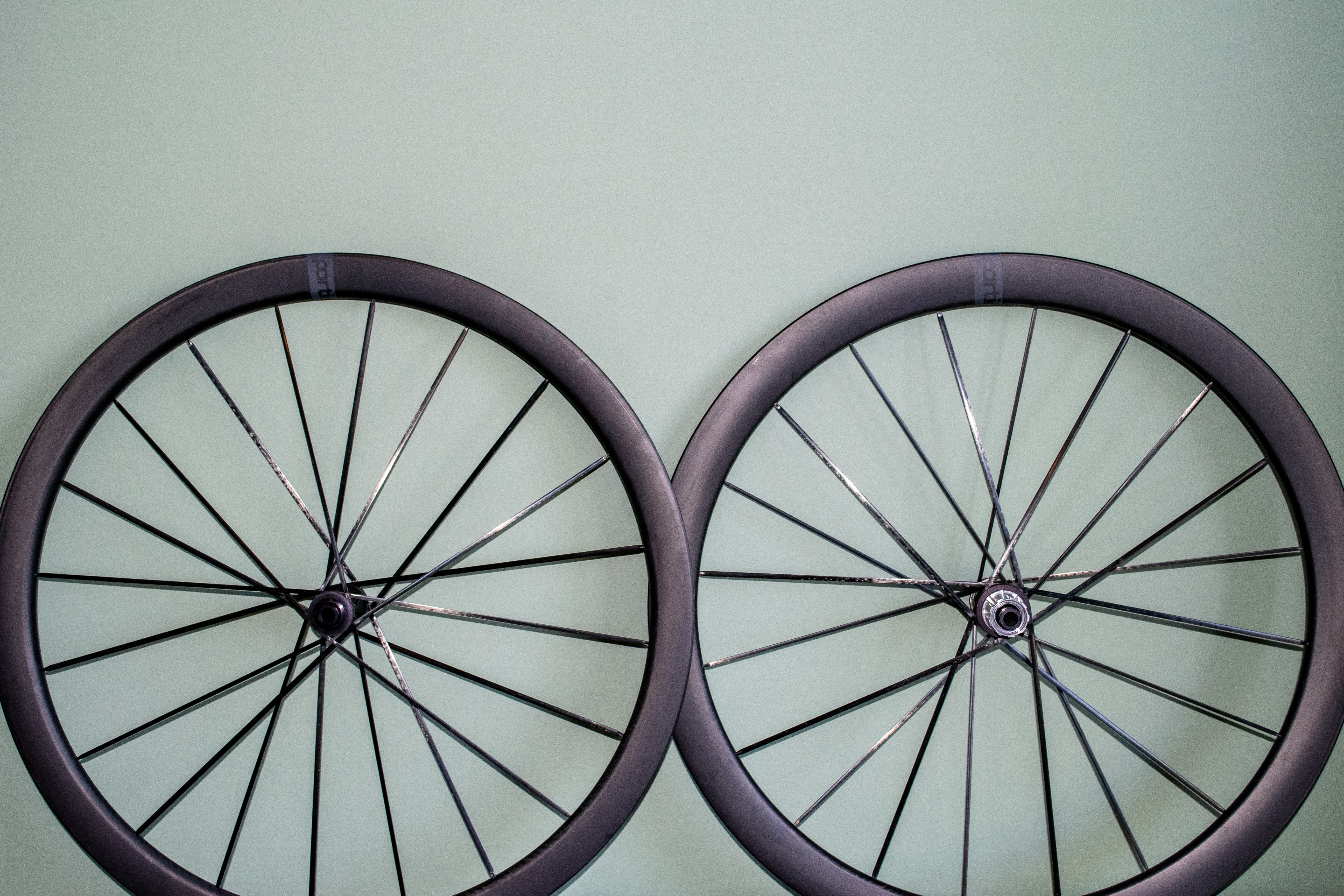
Specifications
Reasons to buy
Reasons to avoid
✅ You want exclusivity and a handmade product: These wheels are custom-made and are amongst the most expensive available. Partington makes pretty much everything except the bearings themselves.
✅ You want a special ride feeling and experience: When I tested these wheels, they just made everything feel better, like always having good legs.
❌ You are on a budget: These are seriously expensive wheels at over $4,000.
❌ You want more easily replaceable spokes for touring or long-distance riding: If an accident happens and a spoke gets broken, you will need to ship the wheels back to Partington in Australia.
Partington is a small Australian company that makes very high-end, handmade carbon wheels. There's a two-wheel lineup, and the R Series MKII, which has a 1,160g claimed weight. Despite the 39/44mm mid-depth wheel profile, the wheels are also incredibly stiff with bonded carbon fibre spokes, making them well suited to climbing.
Partington has worked with CeramicSpeed to develop the carbon hub shell and the bearings. The rim profile is filled with low-density aerospace-grade foam, which the brand says adds to its rigidity.
The wheelset uses rim-to-rim carbon spokes, which Partington says adds to their exceptional rigidity compared to other wheels of this weight. As with Campagnolo wheels, there's a non-pierced rim bed, which means no tubeless tape is needed, saving yet more weight. The wheels are hooked and can be run with tubes or tubeless. They're stiff and hold speed really well on the flat, but deliver an obvious return when climbing at a little over a kilo for the pair.
Partington also has an even lighter R31 wheelset that uses the same design and construction methods. We have listed the 39/44 wheels because we have ridden and tested them ourselves.
Read more in our Partington MKII R-Series in-depth review.
The original lightweights
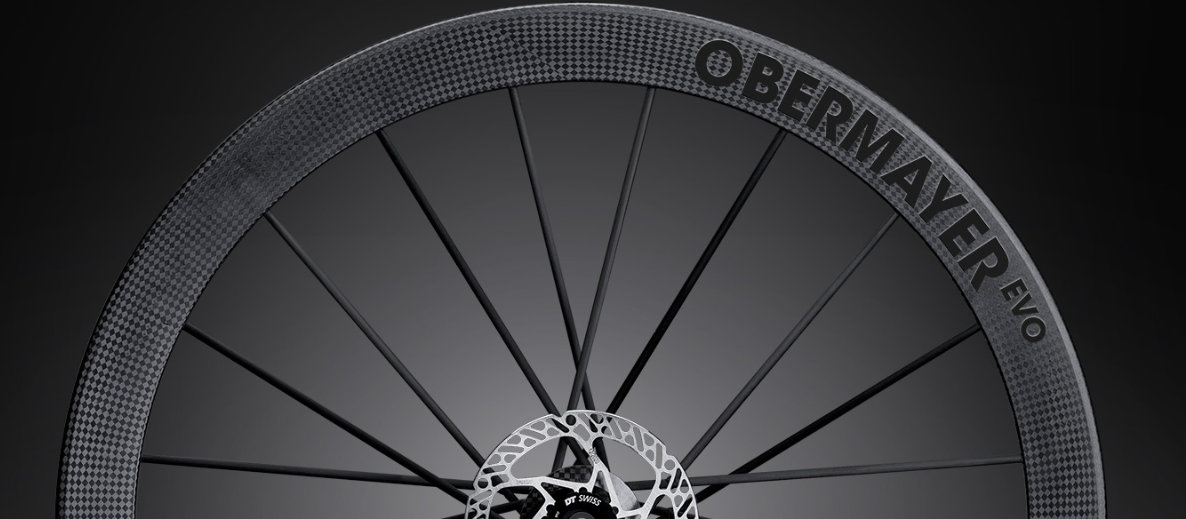
3. Lightweight Obermayer Evo
Specifications
Reasons to buy
Reasons to avoid
✅ You want an iconic, unique design: Lightweights use an all-carbon spokes construction that's bonded together. They have been making wheels like this for decades, and it's an iconic design.
✅ You prioritise low weight and stiffness: These are very light, stiff wheels with a great stiffness-to-weight ratio.
❌ You want the lightest, most aerodynamic wheels possible: There are more aerodynamic wheel rim profiles on the market, and some wheels are lighter still.
❌ You want to spend less: These are very expensive wheels that sit at the top of the tree when it comes to pricing. You could buy some very capable wheels for a lot less.
Lightweight is a pretty legendary name in the world of specialist lightweight wheels. in fact, the German brand pretty much invented the hyper-light wheelset category, and a great many races have been won on lightweights.
Lightweight uses subtle styling and an all-carbon fibre construction to produce very light, yet very stiff wheels. Their wheels actually used to be even lighter, but generally disc brake wheelsets and the move away from tubular tyres have brought weights up.
The Obermayer Evo is the brand's top-tier wheelset, and the wheels, despite their 48mm depth, weigh in at 1230 grams per pair. Lightweight wheels have less progressive rim shapes and widths than some other brands, which arguably are less aerodynamic, but for pure climbing missions, this is potentially less of a factor.
If you want exclusive, light and stiff, then look no further.
Race proven at the highest level
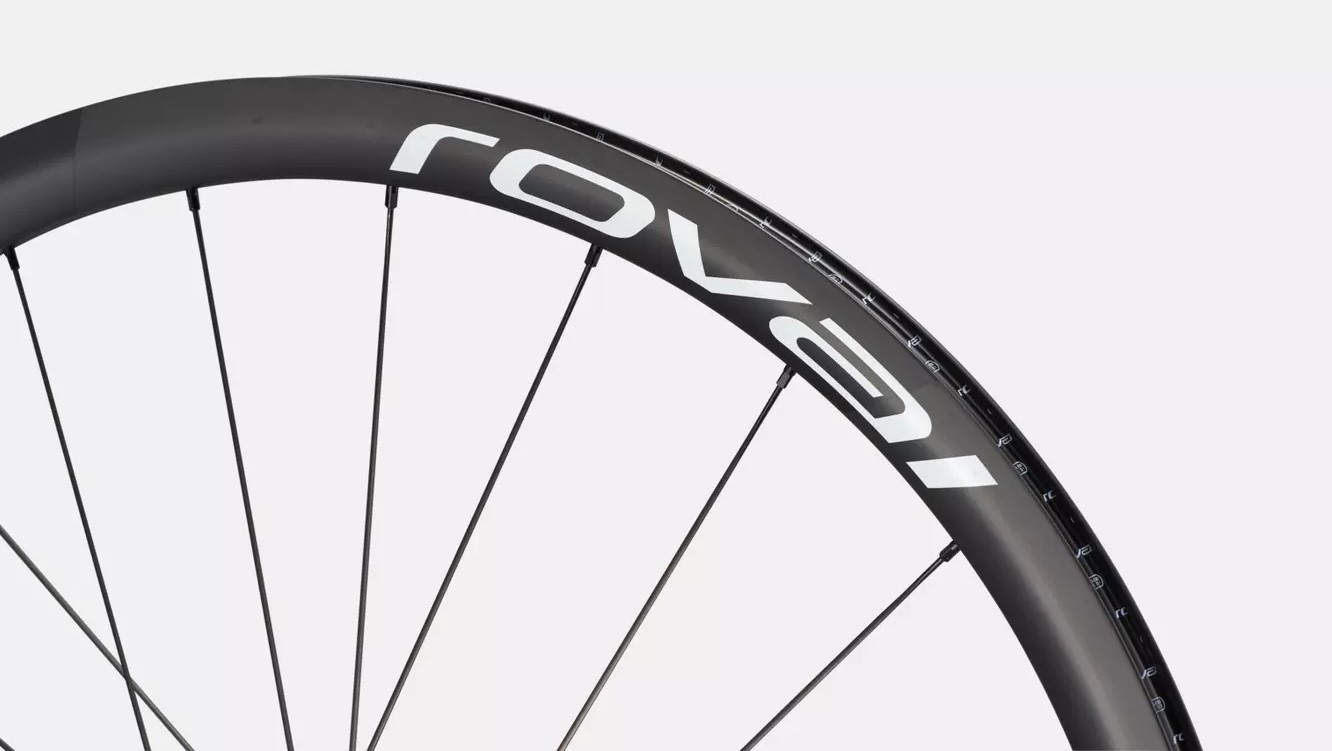
4. Roval Alpinist CLX II
Specifications
Reasons to buy
Reasons to avoid
✅You want some up-to-date, race-proven, shallow carbon wheels: The Alpinists tick every box and are race-proven at the highest level.
✅ You ride a Specialized bike and want things to match: Roval wheels and Specialized frames just go together, they match very nicely.
❌ You want to ride a deeper rim: At 33mm, the Roval wheels aren't the deepest wheels on this guide and a deeper aero rim might provide more aero benefits.
At 1250 grams, 1,265g including tape and valves, the Alpinist CLX II is one of the lighter options on this list, which makes it an exciting proposition given the price is reasonably competitive among the best lightweight wheels. Of course, they're still a big investment, but they're less than half the price of the most expensive wheels on this list.
While the original wheels were not tubeless compatible, the version II is, with the hooked bead extending tyre compatibility. Thanks to that minimal mass, their acceleration is instant, and they climb like little else we've ridden. Remco Evenepoel has regularly used them in the high mountains in the Tour de France.
The 33mm depth means crosswinds aren't an issue, and despite expecting them to suffer aerodynamically on the flats, they hold their own much better than we anticipated.
Pressure monitoring system
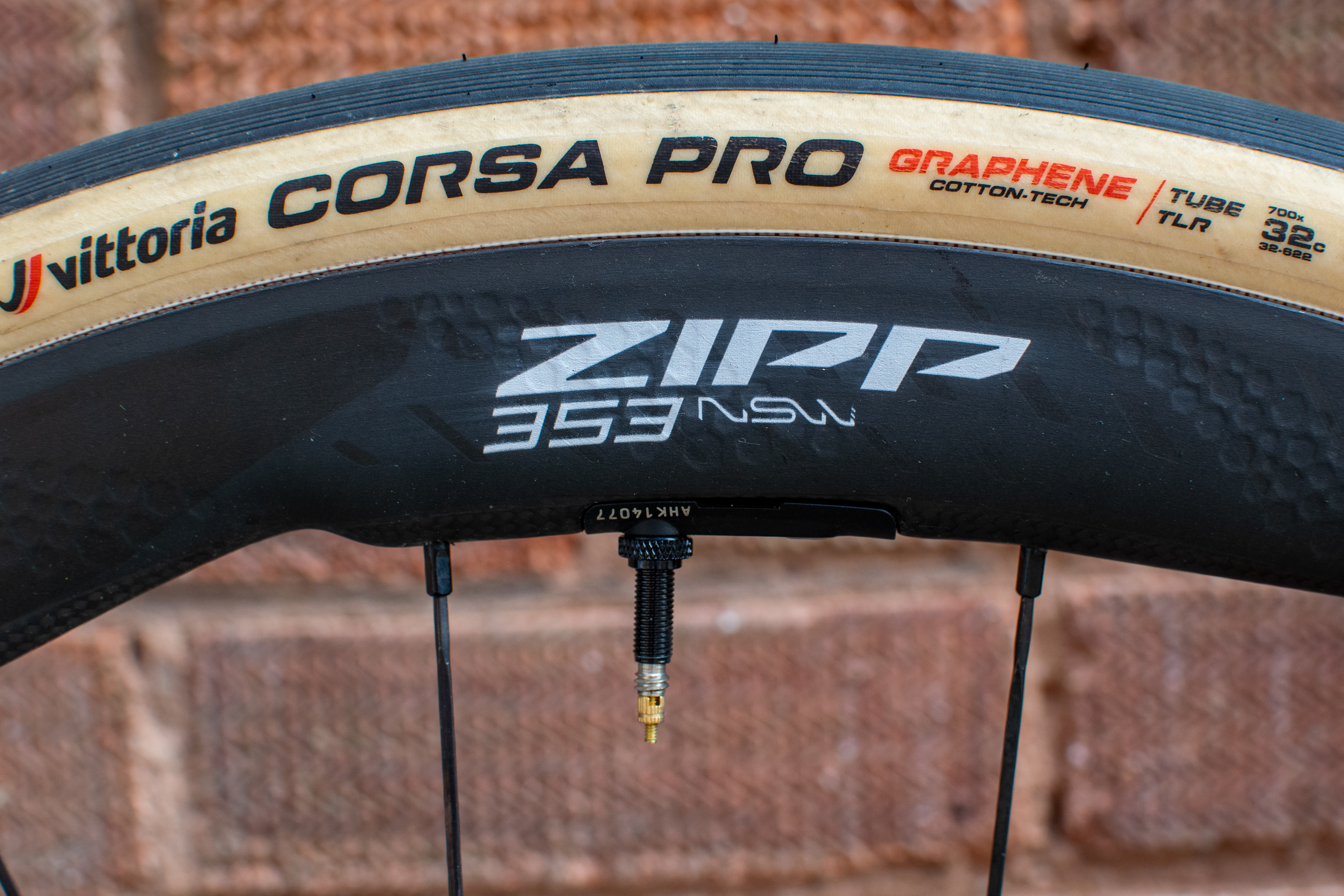
5. Zipp 353 NSW
Specifications
Reasons to buy
Reasons to avoid
✅ You want some fast all-rounders that are good for a range of riding: The depth and profile of the 353's make them well suited to everything from long all-day rides to racing.
✅ You like the integrated pressure monitoring tech: Though not essential, the AXS tyre pressure sensor can be a useful tool and even help alleviate any anxiety in the event of a slow puncture or tubeless repair. It showed me my tyre pressure was stable when I punctured recently.
❌ You prefer a hooked rim: These wheels use hookless rims without a hook.
❌ You want free rein to use any tyre you wish: There is a compatibility chart: Zipp has a specific list of tyres that are compatable with these wheel rims.
Zipp overhauled the 353NSW wheels in May 2025, and alongside improvements to the wheel, introduced brand new AXS real-time pressure sensing tech that is built into the rim.
First off, the 353 NSW weigh in at 1310 grams per pair, including the AXS pressure sensor, but SRAM says the rims have a 16 per cent increase in rim impact strength.
The wheels, designed for racers and endurance road riders, use a sawtooth rim profile shape for stability and aerodynamics. I have ridden the Marmotte Granfondo on these wheels, descending several mountains and climbing all day, and never once felt any instability.
The ZR1 SL hubset is 30 grams lighter than previous versions, with ceramic bearings as standard.
Lastly, the AXS pressure sensor, which uses a coin cell battery, allows you to monitor tyre pressures in real time and also carry out optimal pressure testing with a power meter.
The wheels are optimised for 30mm tyres, and Zipp has designed tyres in partnership with GoodYear for them, though a range of different tyres can be fitted.
These are lightweight, high-end all-rounders that you could do everything with, if the pressure sensor appeals to you, that might just swing it.
Best value
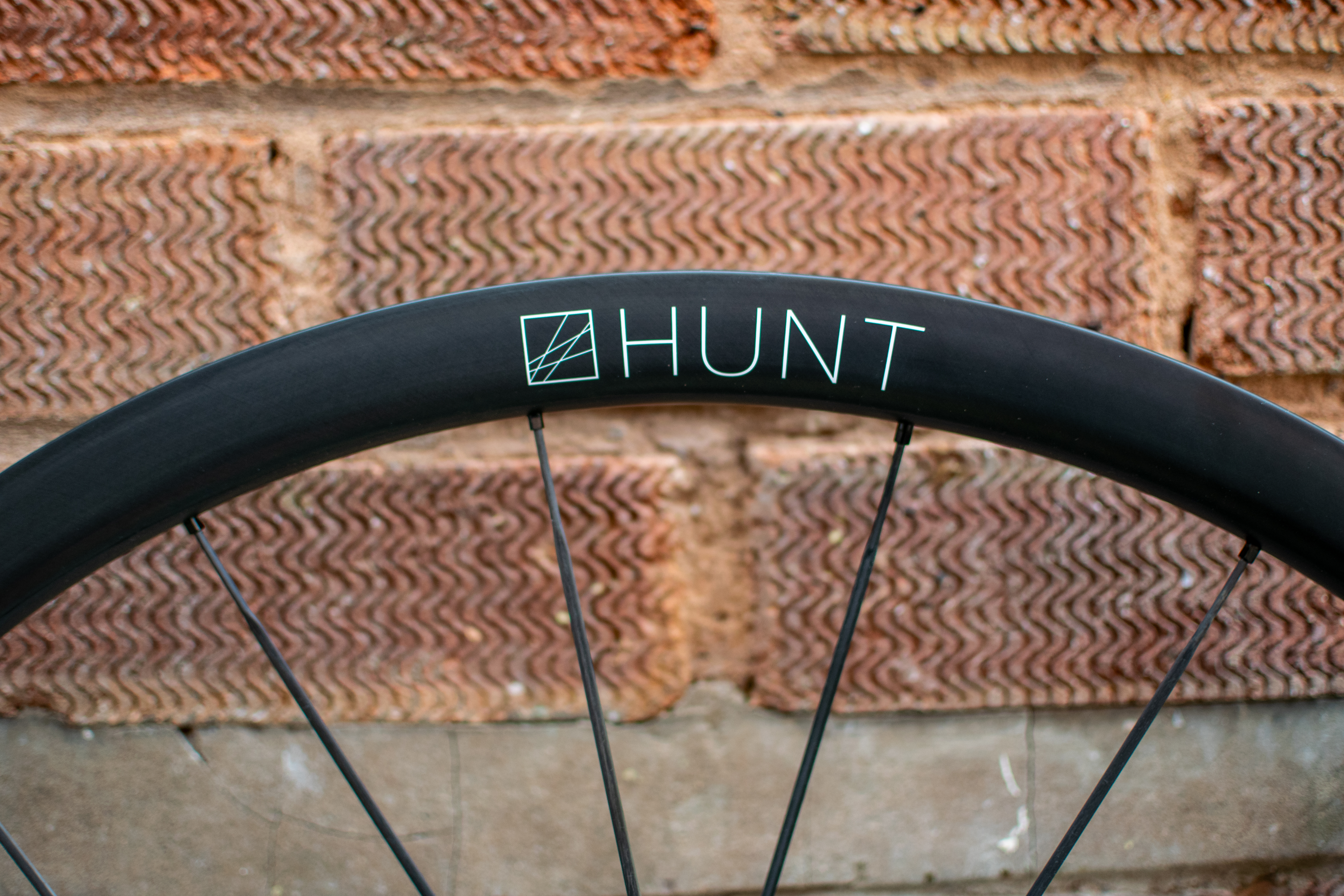
HUNT 32 Aerodynamicist UD Carbon Spoke Disc Wheelset
Specifications
✅ You want some superlight wheels that are more affordable: These wheels are less than half the price of some options here, but are of a very similar weight.
✅ You want to run tubeless tyres above 28mm: These wheels are optimised for a 28mm tyre; a wider tyre may not interface very well with the sidewall of the rim, making it less aero.
❌ You want a hooked rim
❌ You prefer steel spokes
The Hunt HUNT 32 Aerodynamicist UD Carbon Spoke Disc Wheelset features a shallow 32mm carbon, hookless rim paired with carbon fibre spokes for a low overall weight of 1213 grams per pair.
The competitive weight, combined with the stiff spokes produces a nice handling wheel that feels stiff, especially out of the saddle.
The hookless rims are optimised for 28mm tyres and above, though the 21mm internal rim size may be a slightly limiting foactor for larger volume tyres.
For a more affordable pair of lightweight wheels, the 32 Aerodynamicist could be a solid option.
Best of the rest
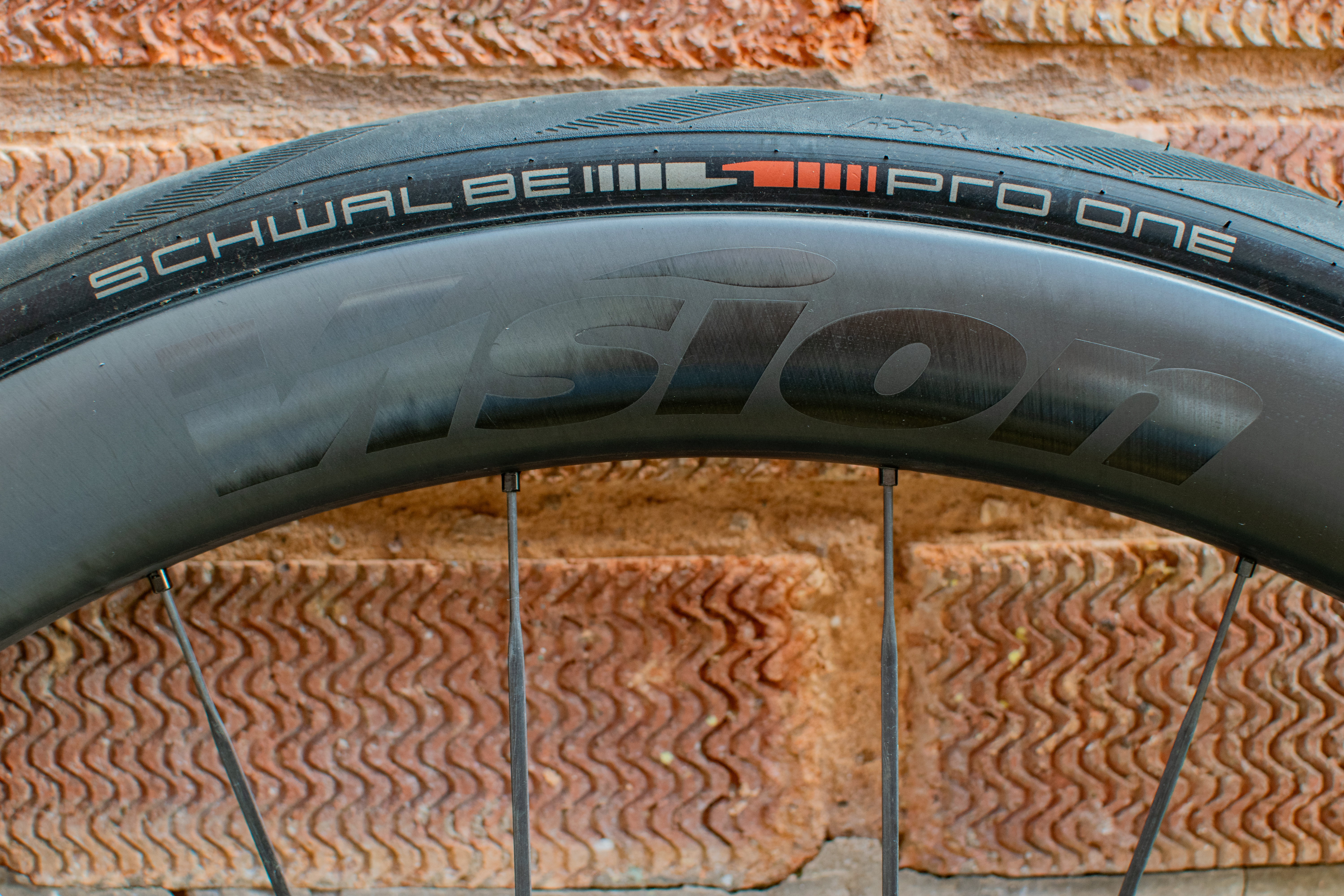
6. Vision Metron 45 RS
Specifications
Reasons to buy
Reasons to avoid
✅ You want light, stiff, aero all-rounders: These wheels are 45mm deep, but are a very competitive weight, giving you the best of both worlds.
✅ You want a hooked rim: These wheels have a hooked rim profile, which arguably adds more security in the event of a major pressure drop.
❌ You want a shallower rim, these are 45mm deep: You can have your cake and eat it with these wheels, but if you do want a really shallow rim, look elsewhere, perhaps to the Roval option.
The new Vision Metron RS wheels, also launched recently, are a wheelset that is really at the forefront of a group of newer wheels that lower weight whilst maintaining aero performance.
The 45mm deep RS rims have a rounded profile and a hooked 23mm internal width, but the overall wheelset weight comes in at a very light 1290 grams. This makes for a best of both worlds balance of aero, whilst lowering overall weight.
Carbon fibre spokes and some other weight-saving tricks contribute to the wheel's weight, and they have been raced on this year by more than one WorldTour squad and will see action at the Tour de France.
I rode these wheels myself at a launch event and was struck by their overall speed and stiffness.
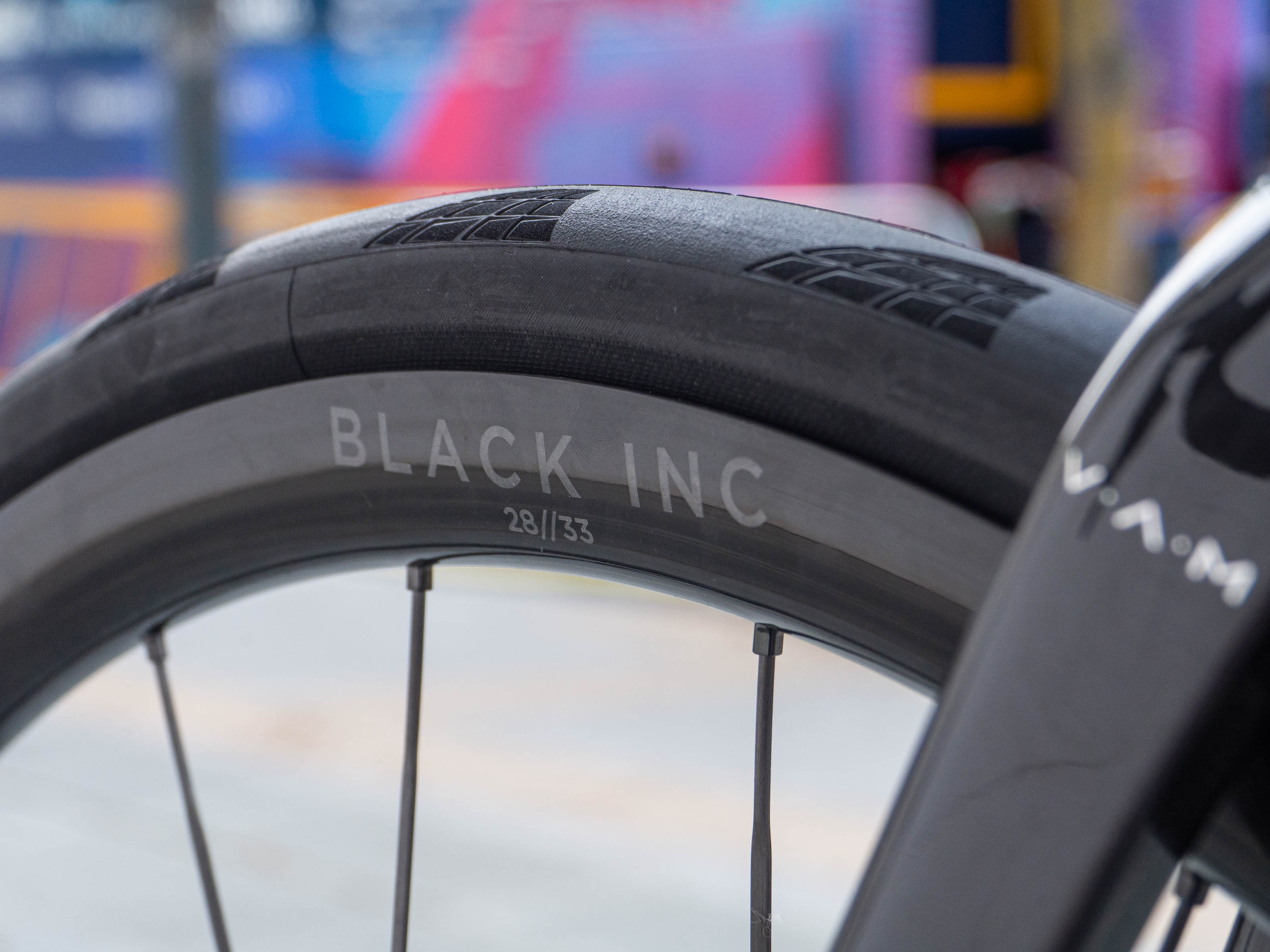
7. Black Inc 28//33
Specifications
Reasons to buy
Reasons to avoid
✅ You want or prefer a hooked rim: These wheels also have a hooked rim profile for added security.
✅ You ride a Factor and want wheels and frame to 'match': Like Specialized and Roval wheels, Factor bikes and Black Inc wheels just look right together, though you can fit them to any bike, of course.
❌ You want a deeper, more aerodynamic wheels, these are on the shallower side: There are deeper wheels available, check out the Vision Metron's if you want deeper and light.
Released in 2023 alongside the updated Factor O2 VAM lightweight/aero bike, the Black Inc 28/33 wheelset has a claimed 1,142g weight. Black Inc says that this is thanks to a nano-impregnated resin, high modulus T-700 and T-800 carbon fibre and an offset spoke bed.
The rims have a hooked bead, so they're compatible with a wider range of tyres than a hookless design and are aero-optimised for 28mm tyres on the 23mm internal width rim. Black Inc says that they're aerodynamically efficient at a wide range of yaw angles.
The alloy hubs are thru-axle compatible and are available with the full range of freehubs including SRAM XDR and Campagnolo N3W. They turn on CeramicSpeed ceramic bearings for that touch more speed.
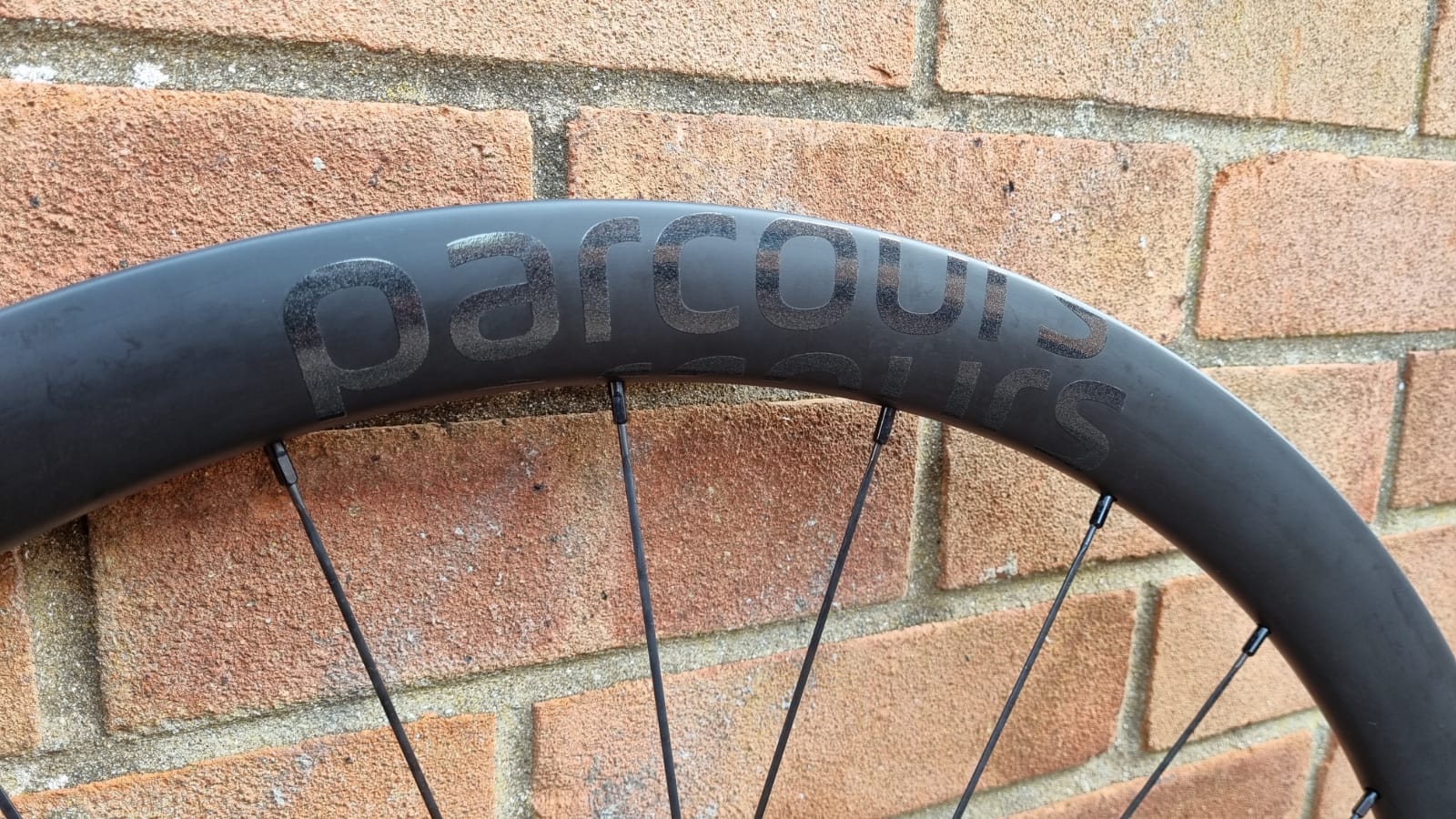
Specifications
Reasons to buy
Reasons to avoid
✅ You want a more affordable wheelset: The Parcours, along with the Hunts, are a lot cheaper than some of the wheels here.
✅ You want a hooked rim and more easily replaceable spokes: The standard spokes used here would be easily replaced at more bike shops in the event of a breakage.
❌You want the lightest wheels possible: At 1,423, these are the heaviest wheels in the guide, though sub 1,500grams for a wheelset is still plenty competitive.
❌You value an effortless tubeless experience: We found these a little tricky. Sometimes, a troublesome tubeless experience can be frustrating and time-consuming.
In our Parcours Ronde Review, we concluded that the Ronde wheels hit a sweet spot between comfort, handling and all-out speed, thanks to the solid build and stiffness-to-weight ratio. But more impressively, they do so with a competitive 1,423g weight and an impressive £1,049 price tag.
They achieve this by designing two altogether separate rims, the front is 35.6mm deep and 32mm wide, while the rear is deeper at 39.3mm but narrower at 30.5mm.
The result is a stable front wheel that tracks well through corners and remains unaffected by crosswinds and a rear wheel that benefits from extra aerodynamic performance.
There's even more information on these in our Parcours Ronde wheelset review.
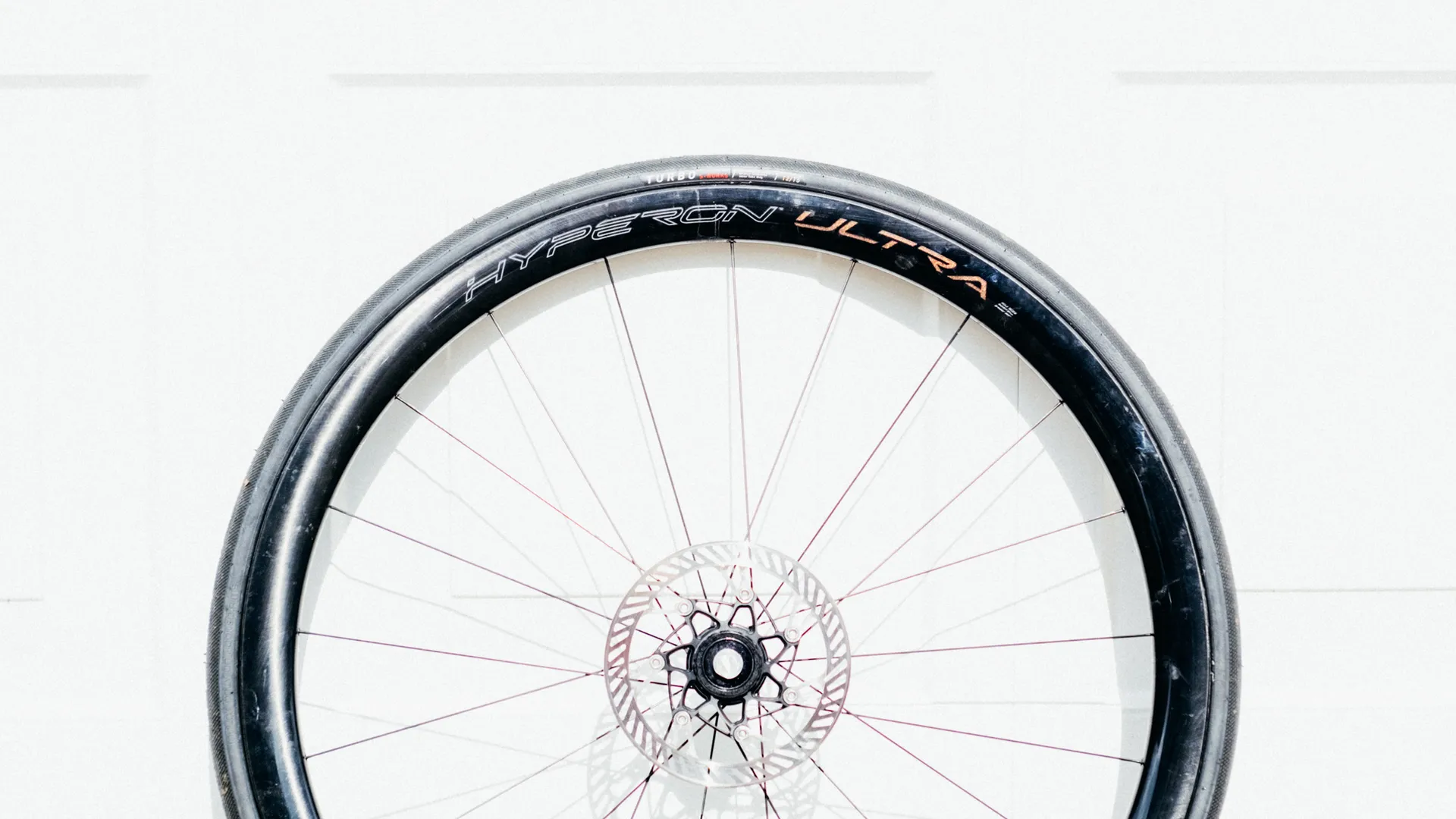
Specifications
Reasons to buy
Reasons to avoid
✅ You want some beautifully finished, premium wheels: Campagnolo Ultra wheels are really fantastically finished, they look and feel that little bit more special.
✅ You want the agile handling of a shallower rim: We liked the handling characteristics of these shallower wheels and specifically mentioned it in our review.
❌ You don't want a Shimano / SRAM / Campagnolo clash on your bike: Some riders may not want a Shimano-equipped bike with Campagnolo wheels and or vice versa, it's purely a style/aesthetics thing.
❌ You want a wider internal rim width; these are 21mm: There's nothing wrong with a 21mm rim, but if you want to run larger volume road tyres, there are wider rims available.
The headline features of Campagnolo's Hyperon Ultra wheels aren't the most impressive in this list, but once you get to riding them, you begin to understand why so many people love the Campagnolo brand and wheels in particular
At 1,240g, they aren't the lightest tubeless-ready wheels featured here, and yet they still request a rather high asking price. However, there is so much more to these wheels than meets the eye. Firstly, the rim itself is completely sealed, meaning there's no need for tape or plugs when setting them up tubeless. The spoke nipples are hidden inside the rim, and they're laced to an all-new striking-looking hub. These hubs encase a 36-tooth ratchet system with Campagnolo's CULT ceramic bearings for speed and efficiency.
They are disc brake and tubeless only, and their 21mm internal rim width is bang on trend with the progression towards wider tyres.
Campagnolo's top-end wheels just look and feel special. The CULT bearings are also very good indeed. These wheels come with wheelbags and accessories and will make a classy, high-end addition to any bike.
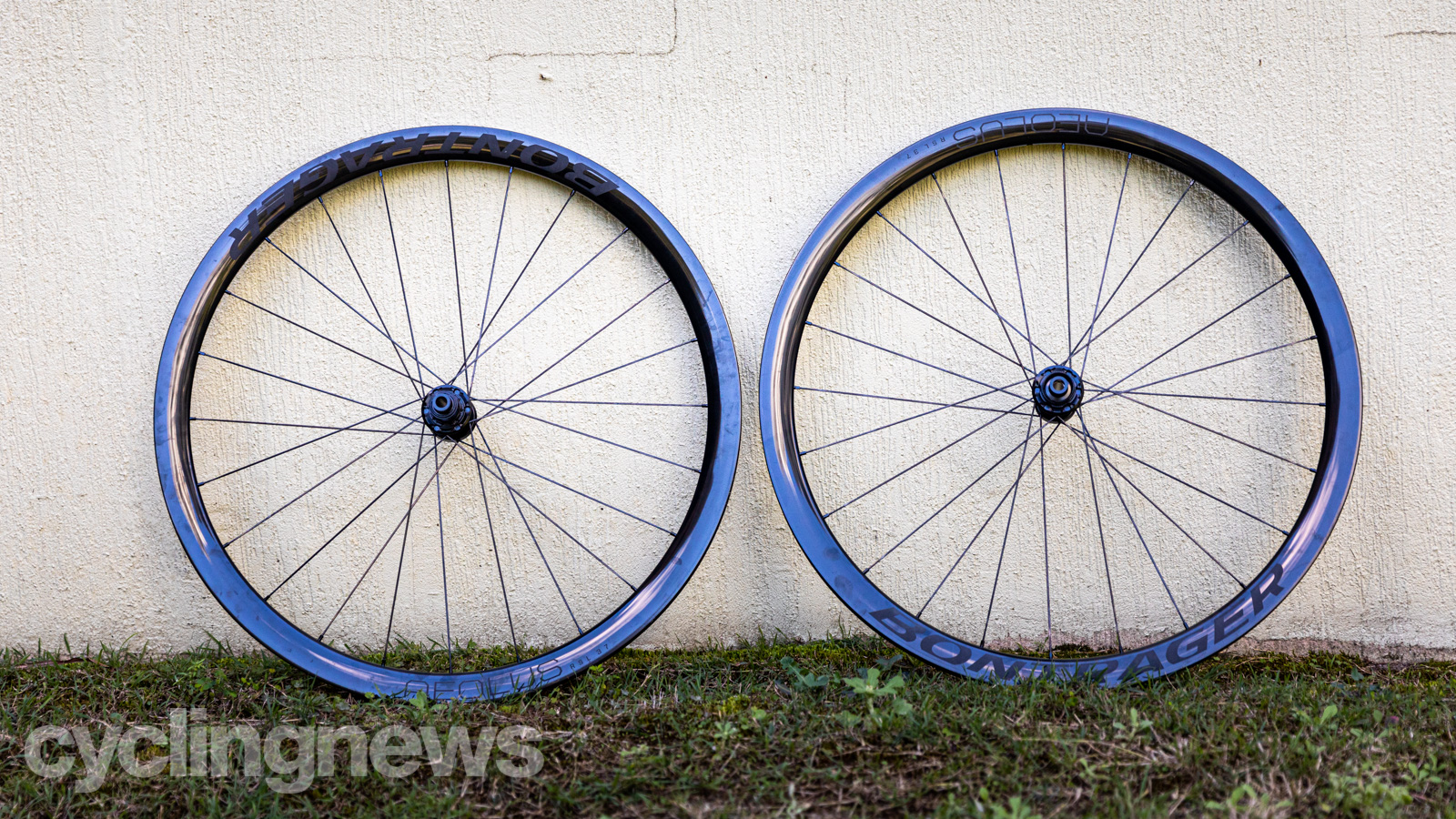
Specifications
Reasons to buy
Reasons to avoid
✅ You want some quality wheels that are just solid all-arounders: You can use these wheels for pretty much everything. Training, racing and long rides.
✅ You ride a Trek and want things to match: Bontrager is Trek's in-house brand, and the wheels just look right on Trek bikes.
❌ You want the lightest wheels possible: There are some of the heavier wheels in the guide at 1,360, though that weight in itself is very competitive.
When our reviewer put these wheels to the test, the only negative he came away with was the price tag, proving that the Bontrager Aeolus RSL wheels are a darn good set of wheels to use.
Everything about them checks the future-proof boxes. They are tubeless-ready, disc-brake compatible, and feature an on-trend 21mm internal width. The 37mm depth is a few mm deeper than some of the purebred lightweight wheels here, meaning they capture a little bit of the extra flat-land aerodynamic performance without gaining too much weight.
At 1,360g, they're not the lightest mainstream wheelset available, but they're certainly sprightly on the climbs.
For more details, check out our Bontrager Aeolus RSL 37 TLR review
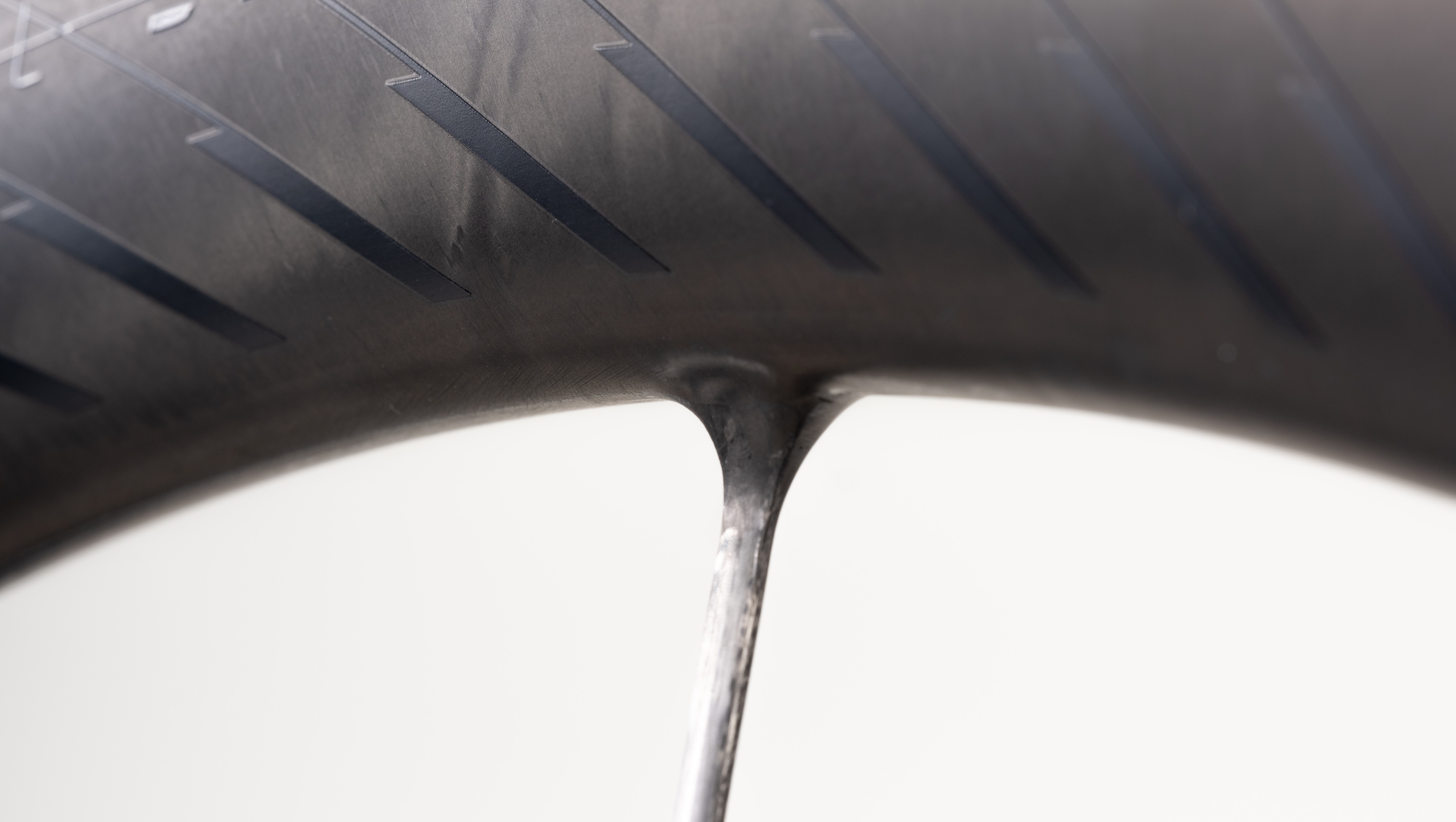
11. Syncros Capital SL
Specifications
Reasons to buy
Reasons to avoid
✅ You want some aero, superlight, super stiff wheels: These are top-end, light, stiff and aero wheels that will transform the ride of any road bike.
❌ You want a hooked rim: These wheels are designed around hookless rims
❌ You don't like the idea of bonded carbon spokes: Like the Partingtons, a damaged spoke will be more costly and complex to repair
Syncros has managed to pack a mid-depth 40mm rim with a wide 25mm internal width into a wheelset with a claimed weight of just 1,170g. The Syncros Capital SL wheelset isn't just available in this depth though, there's a 60mm depth with a claimed 1,290g weight. For the depths, both wheelset weights are impressive.
It's achieved this using a similar rim-to-rim carbon spoke design to Partington and a patented process which it says achieves high tension in its 16 spokes front and rear.
Syncros has worked with Schwalbe to develop new Pro One Aero tubeless tyres in 28mm width to help increase the Capital SL wheels' aerodynamic performance. These have differential front and rear characteristics, with the front tyre more aero and the rear tyre more durable and grippy.
You can read more in our Syncros Capital SL wheelset launch story.
How to choose the best lightweight wheels
Before splashing out on the first set of wheels you set eyes on, it's worth looking at the various attributes that make up the best lightweight wheels. Not only are the following factors fundamental in terms of compatibility with your bike (disc, tubeless, wheel width), but they also have a direct impact on the strength, efficiency and longevity of a wheel.
Are lighter bike wheels better?
Reducing the rotational mass of a wheel is a far more important upgrade than trying to lighten your frame. If you think about it, climbing wheelsets are around 350-500g lighter than the aero equivalent, so not only are you losing total mass, you get the added benefit of saving energy (and wattage) to overcome inertia.
Of course, all else being equal, a lighter wheelset will be faster, but 'all else' is never equal. Reducing weight will usually come at the expense of something else. That could be depth, strength, or even compatibility with tyres.
Take a moment to consider your requirement for aerodynamics. If you're only ever riding along on the flat, then a lightweight pair of wheels will ultimately be slower than a heavier, more aerodynamic pair. In fact, on shallower gradients aerodynamics will trump lower weight; however, with more and more wheelsets becoming lighter whilst maintaining good aero performance, this is becoming less of an issue.
What is the difference between hooked and hookless wheel rims?
There are lots of mentions of hooked and hookless rims in this guide so I thought I would clarify it so it's totally clear.
A hooked rim uses a small 'hook' on the internal edge of the rim that lets the tyre bead interface with it and provides a really secure hold. Wheels have had hooks for decades.
A hookless rim uses just a straight rim edge or lip without a hook; the thicker lip interfaces with more modern, larger tubeless tyre beads for an interference fit that keeps the tyre in place. Hookless rims can be manufactured to be a lot lighter, which has been one of the factors in bringing wheel weights down.
Some wheels also have 'mini hooks' now for a sort of best of both worlds solution.
Hookless rims do rely on the correct tyre fit, and some manufacturers have a list of approved tyres with their wheels. If you are buying hookless wheels, it's best to check and see whether the manufacturer has any recommended or approved tyres for them. If you don't want to have to worry about this, just go with hooks.
Should I always buy the lightest possible wheels?
Having nice light wheels is nice, and can definately aid performance, but don't make the search for the lowest weight possible your only concern.
Good quality wheels are also durable and dependable with easy available, good quality spares and aftercare. A superlight wheelset is all well and good, but the wheels need to be reliable and safe too, so factor strength and reliability into your research when buying.
All of the wheels in this guide are from reputale brands with good after sales support, with quality parts and materials.
Are disc brakes heavier than rim brakes?
In the name of low weight and weigt weeniesm, we will keep this question in, though it's probably fair to say more cyclists will be interested in disc brake equipment these days, though the rim brake aint dead just yet!
Despite their surge in popularity and the many benefits that come with them, disc brakes are indeed heavier than rim brakes, so if you're a weight weenie trying to keep your setup as minuscule as possible, you might want to bear this in mind.
On the other hand, disc brake wheel rims can be built lighter than rim brake wheel rims, as they don't need to handle the forces and heat generated by braking. They can also be wider and have a more aero profile because they don't need to fit into a rim brake calliper. This has also driven the trend to wider tyres on road bikes, themselves potentially faster, more comfortable and more aero than the 23 and 25mm tyres of yesteryear.
Of course, if you only have one bike to work with, then that will already dictate which type of braking system you'll be using. A disc-brake wheelset won't work with a rim-brake frame and vice versa. When choosing the best lightweight wheels for your bike, you'll need to ensure you get the correct braking type.
Which rim depth is best for lightweight wheels?
Lightweight wheels for climbing possess a far shallower profile than their deep-dished brethren, usually around 25-40mm, which is great for climbing and handling characteristics but not so much for straight-line efficiency.
For many, however, the sacrifice in aerodynamics is worth the gain in gravity-trumping weight. It all comes down to the type of terrain you ride - if your local training roads are mountainous or hilly, then it's wise to go with a shallower wheelset; if it's flat or rolling, go aero.
Are carbon wheels worth it?
While it's no secret that carbon is stiffer, more responsive, and better at absorbing vibrations than aluminium, there isn't much of a weight discrepancy between the two materials. In fact, in some instances, aluminium is lighter, and it's certainly cheaper.
For general riding, you don't need carbon wheels, though they are a popular upgrade and make any bike instantly look cooler and more aggressive.
If you are interested in performance riding, going faster or racing, then carbon wheels offer a clear advantage and are worth investing in.
Real world example, if I do a hard ride on my aluminium hand-built training wheels, I can always feel the difference between them and my carbon fibre wheels, and it's often a lot harder to keep up and maintain speed.
Do lighter tyres make a difference?
Tyres can make some of the biggest differences to ride performance; it's always worth investing in the best quality pair you can; they are your contact point with the road.
The best lightweight wheels are all about keeping weight to a minimum while still retaining stiffness, so it's imperative that you choose a tyre that complements its function - there's little point in fitting heavy, slow tyres as this defeats the purpose. It's also worth considering the compatibility, as, with the introduction of tubeless wheels and hookless beads, not all tyre manufacturers are guaranteed to be compatible.
The brands behind all of the best lightweight wheels will have a tyre compatibility chart that tells you what's safe (and more importantly, what's not safe) to use.
Should I go tubeless?
Almost all wheels are now tubeless-ready, and there are more tubeless tyre options than tube-only ones. Compared to butyl inner tubes, tubeless sealant will save you weight and lower rolling resistance. It's more nuanced if you want to spend more and fit latex or TPU inner tubes. Tube-type tyres are usually lighter than even the best tubeless tyres.
One source of rolling resistance is the friction between the inner tube and the tyre casing, which you'll avoid by going tubeless. It's more significant with butyl inner tubes than with latex inner tubes. Tubeless also reduces the risk of pinch flats, and the sealant provides some added puncture protection, though it isn't a total get-out-of-jail card; you should still carry spares.
The latest race content, interviews, features, reviews and expert buying guides, direct to your inbox!

Josh is Associate Editor of Cyclingnews – leading our content on the best bikes, kit and the latest breaking tech stories from the pro peloton. He has been with us since the summer of 2019 and throughout that time he's covered everything from buyer's guides and deals to the latest tech news and reviews.
On the bike, Josh has been riding and racing for over 15 years. He started out racing cross country in his teens back when 26-inch wheels and triple chainsets were still mainstream, but he found favour in road racing in his early 20s, racing at a local and national level for Somerset-based Team Tor 2000. These days he rides indoors for convenience and fitness, and outdoors for fun on road, gravel, 'cross and cross-country bikes, the latter usually with his two dogs in tow.
